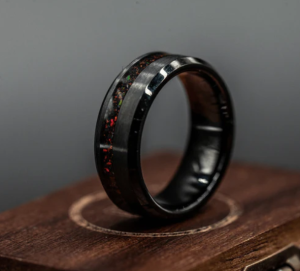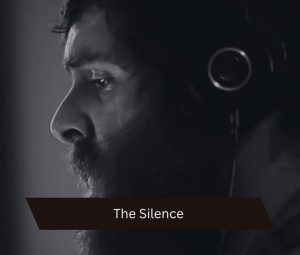Monopods are an essential accessory for photographers and videographers, offering enhanced stability and portability. Unlike traditional tripods, which feature three legs, monopods utilize a single leg, making them more compact and flexible while providing much-needed support during photography or videography. These lightweight, versatile tools are especially beneficial in scenarios where space is limited or when photographers need to move quickly between shots. Monopods allow for smoother shots and clearer images and provide better control, making them a vital tool in various professional and amateur photography settings.
Over the years, monopods have become more than simple stabilizers. They are now designed with modern technology and feature numerous advancements that cater to different photography styles. Whether you’re capturing wildlife in motion, shooting sports events, or simply looking for greater stability in low-light environments, a monopod can elevate your photography skills significantly.
This guide will walk you through the evolution of monopods, the factors that make them an essential piece of equipment for photographers, and how to choose the best one for your needs. We will also delve into tips for maximizing your monopod use to help improve your photography experience.
The Evolution of Monopods
Monopods have evolved greatly since their inception, driven by both advances in photography technology and the increasing demand for portability and efficiency.Createdd to provide additional support during photoshoots, monopods gained popularity as photographers and videographers started using them in more dynamic environments such as sports arenas, busy streets, and nature photography settings.
The early versions of monopods were simple designs, usually made from metal or wood. They were bulky and often difficult to transport. However, as camera technology improved and the demand for more portable gear grew, so did the evolution of the monopod. Manufacturers began utilizing lightweight materials like carbon fiber and aluminum to reduce the weight of the monopod while maintaining stability. The advent of quick-release mechanisms, adjustable height features, and even built-in smartphone mounts has made monopods incredibly user-friendly, allowing photographers to seamlessly integrate them into their workflow.
Technological advancements have further refined their usability. Modern monopods are equipped with features such as rubber feet for stability on various surfaces, ergonomic grips for comfort, and detachable components that increase versatility. These improvements make monopods essential for professionals who need a combination of portability, flexibility, and stability in their gear.
Features of a High-Quality Monopod
When selecting a monopod, certain features distinguish high-quality products from basic models. A sturdy construction is one of the most important factors. Monopods should be strong enough to support your camera gear without compromising stability. The design and materials used for the monopod frame significantly affect its durability and performance. High-end monopods typically use materials such as carbon fiber or aluminum, which offer a great balance between weight and strength.
Comfort is another key aspect to consider. Since monopods are used by holding the grip while shooting, the grip must be ergonomic and non-slip. A well-designed grip ensures that photographers can maintain a steady hold for long durations without experiencing discomfort.
Height adjustment is also a significant feature of quality monopods. Being able to adjust the height of the monopod quickly and easily allows photographers to capture a variety of shots without the need to constantly reposition or change equipment. This flexibility is particularly valuable in action photography, where quick adjustments are necessary.
The inclusion of detachable and reversible components is another feature that adds versatility to a monopod. By allowing users to swap out parts or reverse certain components, monopods can adapt to a wider range of shooting conditions. For instance, some monopods come with a detachable base that can be used as a stand when the monopod is not in use. Others may include a reversible leg that allows for different angles of shooting, offering more creative possibilities during photo sessions.
How to Choose the Right Monopod
Choosing the right monopod is crucial to achieving the best results from your photography sessions. There are several factors to consider to ensure that your monopod fits your specific needs and enhances your photography experience.
The first factor to assess is the type of photography you specialize in. Different monopods cater to different needs. If you often travel or shoot on the go, a lightweight and compact monopod may be ideal. These monopods are designed for portability and can easily be packed away when not in use. On the other hand, if you’re a sports or wildlife photographer, you may need a more robust monopod that can handle the demands of shooting in dynamic environments. These monopods typically offer greater stability and are designed to withstand frequent use.
Weight capacity is another essential consideration when choosing a monopod. Depending on the type of equipment you use, such as cameras, lenses, or video rigs, the monopod should be able to support the weight without causing instability. Some monopods are designed specifically for heavy-duty use and can carry large cameras with long lenses, while others are better suited for lighter setups.
Height adjustment features are critical for versatility. Depending on your shooting environment, you may need to adjust the height of the monopod frequently. A monopod with an easy-to-use height adjustment mechanism can save you valuable time and help you achieve the desired shot quickly. Additionally, monopods that feature a swivel head allow you to easily adjust the angle of the camera, which can be incredibly useful when shooting from different perspectives.
How Monopods Enhance Your Photography Skills
Using a monopod is one of the easiest ways to improve your photography skills. One of the main benefits of a monopod is the enhanced stability it provides. By stabilizing your camera, monopods reduce the amount of camera shake, allowing you to capture clearer, sharper images. This is especially useful when shooting in low-light conditions or when using slower shutter speeds, which can often result in blurry images without additional support.
Monopods also give photographers greater control over their movements. Since they are lightweight and portable, you can easily reposition yourself without the hindrance of heavy tripods or bulky equipment. This freedom of movement makes monopods ideal for capturing candid moments or action shots where speed is essential. Whether you’re photographing wildlife or shooting sports, a monopod allows you to follow your subject without sacrificing the stability needed for clear and crisp images.
In addition to offering stability, monopods can improve your composition. By allowing you to maintain a steady hand, monopods help you frame your shots more precisely. This ability to focus on the composition rather than worrying about holding the camera steady leads to better photography results.
Tips for Using a Monopod Effectively
To get the most out of your monopod, it’s important to use it effectively. A common technique for maximizing stability is to extend the monopod fully and lock it into position before composing your shot. This ensures that the camera remains stable during shooting, minimizing any shake or blur. When shooting moving subjects, such as athletes or wildlife, it’s important to keep the monopod steady and avoid making sudden, jerky movements. A smooth panning motion will allow you to follow the subject without introducing unwanted camera shake.
Another important tip is to use your body as a stabilizer. For added support, you can lean against a solid object, such as a wall or tree, to minimize movement. When shooting, make sure your posture is comfortable and your grip on the monopod is firm but relaxed. This balance will help you maintain control without straining your hand or wrist.
Conclusion
Monopods are invaluable tools that can significantly enhance your photography skills. By providing stability, flexibility, and ease of movement, they allow photographers to capture sharper, more dynamic images. Whether you are a beginner or a seasoned photographer, investing in a high-quality monopod is a wise choice that can improve your photos in a variety of shooting scenarios.
With the right monopod, you will gain greater control over your shots, reduce camera shake, and enhance your overall photography experience. Take the time to explore the various options available, and choose a monopod that best suits your needs, ensuring that you have the right support for capturing stunning images, no matter where your photography takes you.












